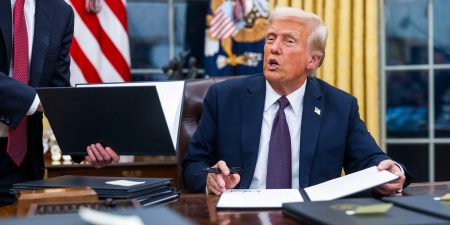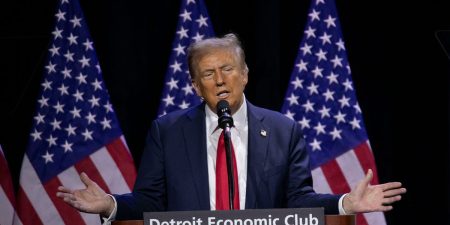Introduction to Trump’s Tariff Plan
President Donald Trump has announced plans to impose a 25% tariff on steel and aluminum imports, set to be officially declared on Monday. This move aims to bolster domestic industries, a key focus of his second term. The tariffs are expected to affect imports from major suppliers like Canada, Mexico, Brazil, and the UAE, potentially leading to increased costs for goods such as cars, homebuilding materials, and household items.
Impact on Trade with Key Countries
The tariffs target key trade partners, with Canada, Mexico, and Brazil being major steel suppliers, while Canada, the UAE, and Mexico lead in aluminum exports to the U.S. These tariffs could strain international relations and affect trade dynamics, with possible retaliatory measures from affected nations, as seen in past trade disputes.
Effects on Consumer Prices and Industries
Consumers may face higher prices for goods like automobiles, home appliances, and construction materials due to the tariffs. Industries such as automotive and construction are expected to bear significant costs, which could trickle down to consumers. Additionally, sectors like travel and household goods may also be impacted, highlighting the broader economic consequences.
International Responses and Trade Dynamics
The announcement follows recent tariffs on Chinese goods, prompting retaliatory measures. Trump’s previous tariffs saw exemptions for certain countries, a strategy that might be revisited. However, the current plan’s specifics remain uncertain, leaving trade partners and economists concerned about potential trade wars and their effects on the global economy.
Historical Context of Trump’s Tariff Policies
This is not Trump’s first foray into metals tariffs. During his first term, he imposed similar tariffs, later granting exemptions to key partners. The move aligns with his "America First" approach but has drawn criticism for potentially hurting consumers and complicating international trade relations, as evidenced by China’s retaliatory actions.
Concluding Implications and Considerations
The tariffs underscore Trump’s continued focus on protecting domestic industries, despite concerns about consumer costs. The global trade landscape may face renewed tensions, especially if other nations retaliate. As the administration navigates this policy, the balance between industrial protection and consumer welfare remains a critical consideration.












